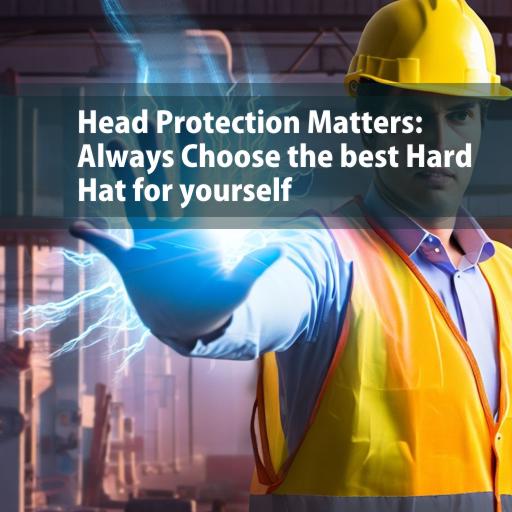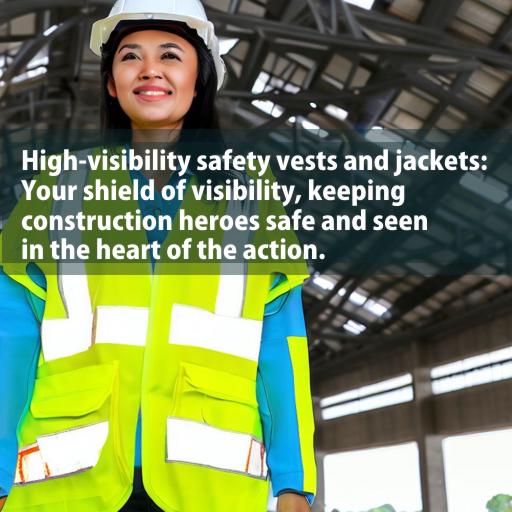Construction sites pose many hazards to workers. Having the right protective gear for construction workers suitable for the job site conditions is vital for safety and productivity. This article explores the must-have gear like hard hats, hi-vis apparel, gloves, and reinforced boots needed by all workers. We also cover specialized equipment for wet weather, hot/humid temperatures, and cold working conditions to shield against injuries and extreme weather effects. Learn about innovative new products that aim to further enhance construction worker safety through technology.
As an experienced project manager in the Army Corps of Engineers, I have seen firsthand the importance of construction workers having proper protective gear and clothing suitable for the job site conditions. Safety gear is essential for every construction worker to shield against hazards, prevent injuries, and comply with occupational regulations.
In this article, I’ll highlight the must-have gear for all job site environments along with specialized equipment for wet weather, hot/humid temperatures, and cold working conditions. We’ll also explore some innovative new products that aim to further boost worker safety, productivity, and comfort.
Importance of Safety Gear on Jobsites
Construction sites are rife with potential risks ranging from falling objects and trip hazards to loud noises and dangerous equipment. Outfitting workers with protective gear suitable for the working environment and tasks performed is crucial. Let’s look at why proper gear matters:
Protecting Against Hazards
Hard hats shield from the impact of falling or flying objects. Safety glasses prevent eye injuries from dust and debris. Steel-toe boots protect feet from heavy loads. High-visibility clothing enhances visibility near vehicles and equipment. The right gear protects against inherent job site dangers.
Preventing Common Injuries
Back injuries from heavy lifting, hearing loss from prolonged noise, respiratory issues from dust inhalation, and falls are frequent occurrences on construction sites. Ergonomic belts, noise-control ear muffs, dust masks, and slip-resistant shoes can help avoid such injuries.
Following Safety Regulations
Government and industry bodies like OSHA have strict rules regarding mandatory safety gear. Providing compliant head, eye, foot, hand, hearing, and respiratory protection ensures penalties are avoided and workers are legally covered.
Essential Gear for All Construction Work
Certain protective equipment is vital for every construction worker regardless of the weather or job type. Here are some universal essentials:
Hard Hats
Hard hats protect the head from blows caused by falling objects which is a constant risk on worksites. They must have an adjustable suspension system for a snug fit. Look for models with ventilation ports for airflow. High-visibility hard hats enhance visibility.

Work Boots
Reinforced steel or composite toe boots safeguard feet against heavy items or tools dropping on them. Slip-resistant soles provide grip on slippery surfaces. Look for sturdy leather boots with ankle support and cushioned insoles for all-day comfort.
Hi-Vis Apparel
High-visibility safety vests, jackets, or shirts enable workers to stand out. This improves visibility near equipment and vehicles to prevent struck-by accidents. Use ANSI Class 2 or 3 garments for the highest visibility.


Gloves
Cut-resistant gloves protect hands from sharp debris, tools, and materials. They provide grip when handling heavy items. Heat-insulating gloves shield from hot surfaces. Flexible fit, dextrous gloves balance protection with dexterity.

Gear for Rainy and Wet Conditions
Working in damp, wet conditions demands specialized wet weather gear to keep construction workers safe, protected and dry.
Waterproof Jackets and Pants
Breathable rain suits keep the body dry in downpours while ventilating heat and sweat. Sealed seams prevent water ingress while taped zippers and storm flaps provide further wet weather protection.
Insulated Boots
Waterproof, insulated rubber boots keep the feet warm and dry all shift long when working in rain, slush, or mud. Deep lugs enhance traction on slick surfaces. Avoid leather boots which can get soaked.
Here are some common types of insulated boots that construction workers can wear to keep feet warm and dry in wet conditions:
Rubber Boots
- Made of 100% waterproof rubber with insulating inner liners. Often have deep cleated soles for traction. Brands like Muck Boots, Servus, and Tingley are popular.
PVC Boots
- Constructed using waterproof polyvinyl chloride (PVC) material. Insulation is provided by felt or foam liners. Usually have deep lug soles. Lacrosse and Tingley PVC boots are top choices.
Neoprene Boots
Use neoprene rubber which is waterproof yet flexible. Insulation through air pockets in the material. Some models have removable liners. Muck and Baffin neoprene boots are ideal.
Leather/Nylon Boots
Made from treated water-resistant leather and nylon. Insulation from ThinsulateTM or PrimaLoft. Brands like Timberland, Caterpillar, and Wolverine make reliable options.
Pac Boots
- A combination of rubber bottoms and leather/nylon uppers provides versatility. Removable liners allow adjusting insulation. Popular brands are Lacrosse, Muck, Baffin.
The key is choosing boots with adequate insulation, waterproofing and traction for the specific jobsite conditions. Avoid standard leather boots which absorb water and provide minimal insulation when wet. Insulated rubber, PVC or leather/nylon boots keep feet warm and dry all day.
Grip Gloves
Wet conditions make materials slippery and difficult to grasp. Look for water-resistant gloves with textured rubber palms and fingers to provide a superior grip on tools and surfaces when hands are wet.
Hot Weather Safety Gear
Working in hot, humid environments brings sweat and heat exhaustion risks. Use specialized weather gear to stay cool under the sun.
Breathable Clothing
Lightweight shirts, pants, jackets, and overalls made from moisture-wicking, breathable fabrics promote air circulation. This evaporates sweat to keep workers cooler in the summer heat.
Cooling Vests
Vests containing packs that can be chilled provide cooling relief when worn under clothes. Some feature fans that improve airflow for dryness and comfort in high humidity.
Sun Protection
Wide-brimmed hats, sunglasses, neck shields, and sunscreen lotions shield from harmful UV radiation. Choose vented hats and UPF 50+ clothing for maximum sun protection.
Cold Weather and Winter Gear
Frigid weather and icy conditions demand heavy-duty protective clothing to prevent hypothermia and maintain dexterity.
Insulated Jackets and Bibs
Heavy insulated jackets and bib or coverall-style pants provide warmth when working outdoors in freezing temperatures. Water-resistant outer shells prevent moisture ingress.
Thermal Base Layers
Wicking thermal underwear made from merino wool or synthetic fabrics worn underneath the outer layers keeps the skin dry and insulated.
Winter Boots and Socks
Feet are especially prone to cold exposure. Use tall waterproof boots with ThinsulateTM insulation. Pair with thick, moisture-wicking wool socks to keep feet toasty.
Innovations in Safety Gear
Beyond conventional equipment, cutting-edge modern safety gear incorporates technology to further boost protection and performance.
Smart Helmets
Hard hats equipped with sensors monitor unsafe noise/temperatures and alert workers via mobile apps. Some feature airbags that inflate to cushion impact upon detecting a fall.
Knee Pads with Cooling Fans
Ergonomic knee pads with tiny built-in fans improve airflow and cooling when kneeling for long periods. This reduces heat discomfort and sweating inside protective pads.
Self-inflating Life Jackets
Flotation devices with triggers that auto-inflate upon falling into water provide instant buoyancy. This can be vital for worker safety near water bodies.
Importance of Work Gear Maintenance
Inspecting safety gear regularly and replacing damaged or worn-out equipment is essential. Train workers on gear cleaning, storage, inspection, and maintenance. Don’t neglect PPE upkeep.
Conclusion
The wide range of safety gear and specialty equipment helps shield construction workers from common job site hazards and extreme weather effects. Employers must provide appropriate protective clothing suited for the conditions while ensuring proper use and maintenance. Equipping staff with compliant, comfortable safety gear improves productivity, morale, and health outcomes. Don’t cut corners when it comes to worker protections.
Frequently Asked Questions
What are the main types of safety gear needed for construction work?
The essentials include hard hats, high-visibility apparel, work gloves, protective footwear, eye protection, and hearing protection devices. Gear like dust masks, back braces, and Arc flash suits may be required for specific tasks.
Should safety gear be different for hot and cold weather?
Yes, hot conditions demand lightweight, ventilated gear to prevent heat stress. Cold weather requires insulated, waterproof clothing to maintain body warmth and dexterity.
How can new smart gear technology help enhance construction safety?
Innovations like sensing hard hats, self-cooling knee pads, and auto life jackets provide added protection, comfort, and monitoring capabilities not offered by conventional gear.
Does high-visibility gear need to meet certain rating standards?
For optimal visibility, select high-vis gear meeting ANSI Class 2 or 3 standards. This ensures sufficient color and reflective material is incorporated into the apparel.
How frequently should workers’ PPE gear be inspected and replaced?
Safety gear should be inspected before each use for damage. Equipment should be cleaned and maintained regularly per manufacturers’ guidelines. Heavily worn or defective gear should be immediately discarded and replaced.
